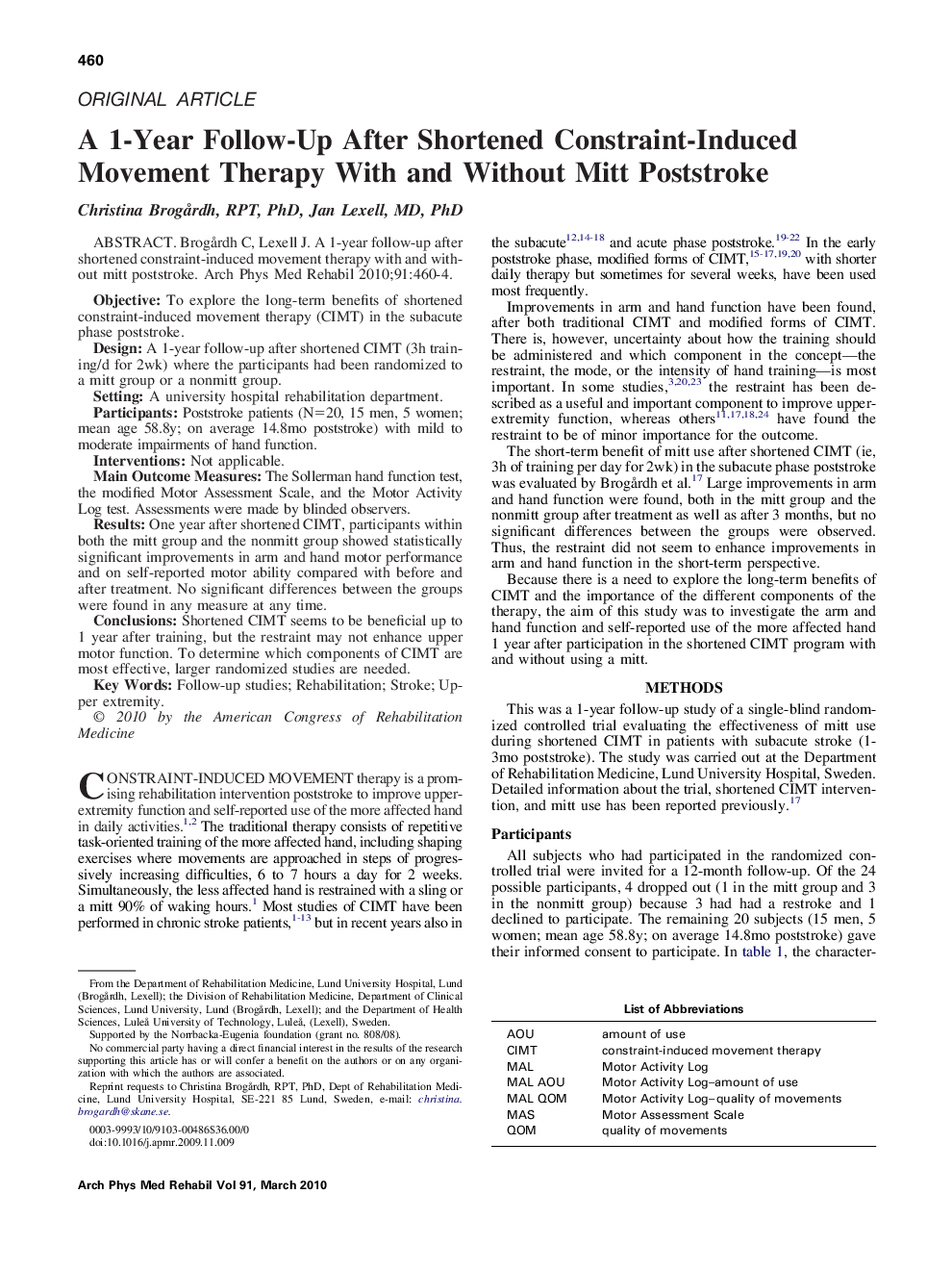| Article ID | Journal | Published Year | Pages | File Type |
|---|---|---|---|---|
| 3449226 | Archives of Physical Medicine and Rehabilitation | 2010 | 5 Pages |
Brogårdh C, Lexell J. A 1-year follow-up after shortened constraint-induced movement therapy with and without mitt poststroke.ObjectiveTo explore the long-term benefits of shortened constraint-induced movement therapy (CIMT) in the subacute phase poststroke.DesignA 1-year follow-up after shortened CIMT (3h training/d for 2wk) where the participants had been randomized to a mitt group or a nonmitt group.SettingA university hospital rehabilitation department.ParticipantsPoststroke patients (N=20, 15 men, 5 women; mean age 58.8y; on average 14.8mo poststroke) with mild to moderate impairments of hand function.InterventionsNot applicable.Main Outcome MeasuresThe Sollerman hand function test, the modified Motor Assessment Scale, and the Motor Activity Log test. Assessments were made by blinded observers.ResultsOne year after shortened CIMT, participants within both the mitt group and the nonmitt group showed statistically significant improvements in arm and hand motor performance and on self-reported motor ability compared with before and after treatment. No significant differences between the groups were found in any measure at any time.ConclusionsShortened CIMT seems to be beneficial up to 1 year after training, but the restraint may not enhance upper motor function. To determine which components of CIMT are most effective, larger randomized studies are needed.
